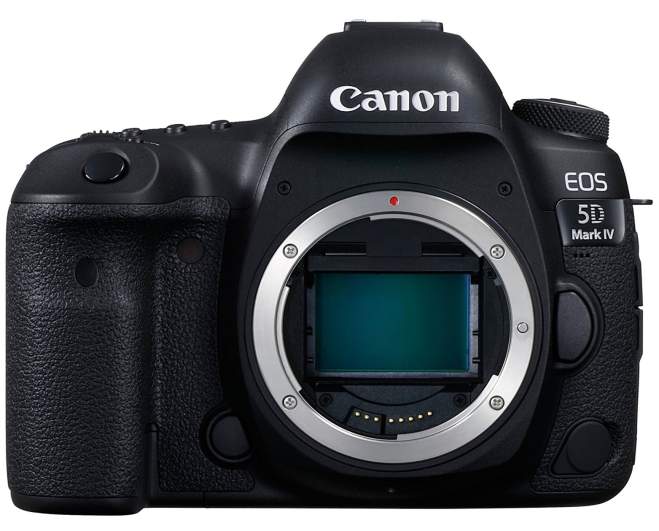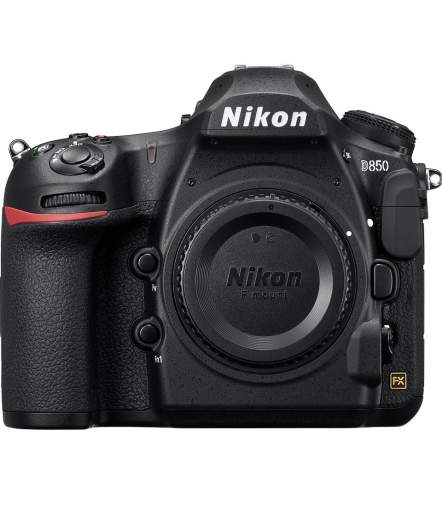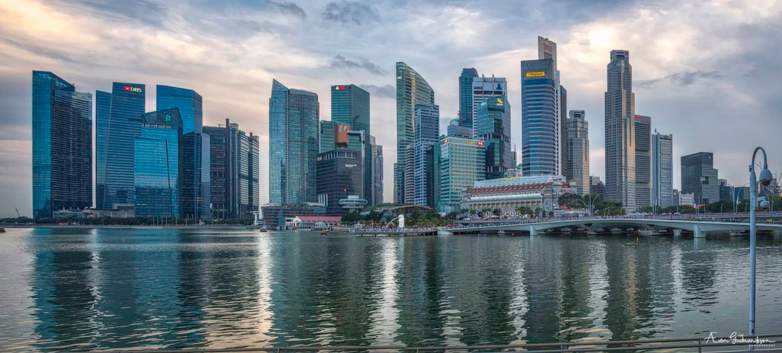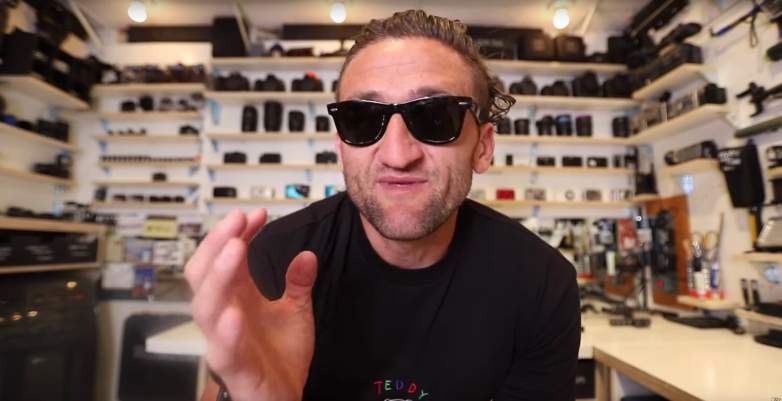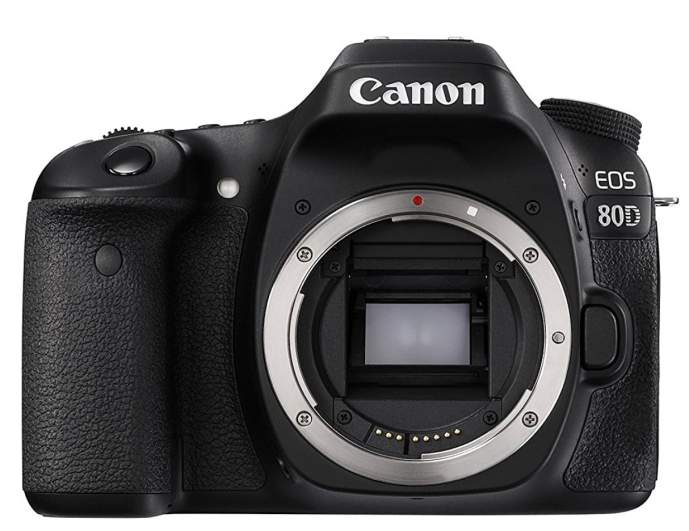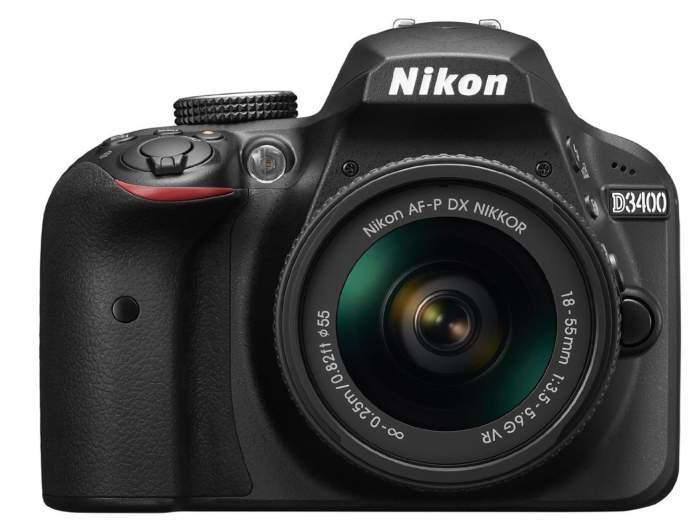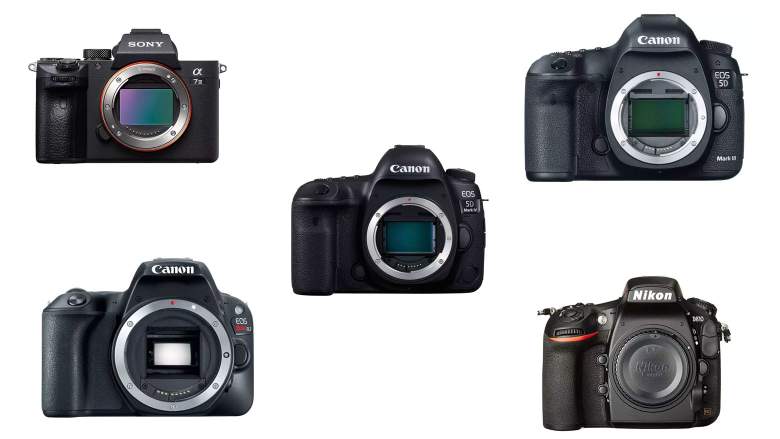
Getting a camera for DSLR video can be tough. If you want a true DSLR, a camera where you look right through the lens, your options are much more limited for cameras that do both high quality photography and video. Your options essentially consist of models only from Canon and Nikon. That said, we have included one Sony model on this list for thoroughness. Some people may be open to shooting on a Sony mirrorless camera and having a digital instead of an optical viewfinder.
On this list, we’ve selected the best models for DSLR video at several different price points including: $3000, $2000, $1000, and below $500.
Depending on your price range, there’s a camera for everyone on this list. However, there is one price range that deserves specific attention, and that’s around $2,000. Many feels that Canon’s 6D Mark II is the weakest video camera on this list for its high price. It does have a few solid perks, but it’s important to be aware that if shooting full frame isn’t that important to you, stepping down to an 80D will yield you comparable stills and better video quality. That is to say, spending more money does not necessarily net you more value.
Other factors to consider when purchasing a DSLR include ecosystem, meaning lenses and accessories. Since both are very established players, you’ll find an ample selection of both. However, Canon has more lenses and some of the cheapest lenses out there.
All in all, there’s not a bad camera on this list. Here’s the best cameras for DSLR video from highest to lowest price.
Best DSLR video cameras for ~$3,000
5D Mark IV (The cheapest Canon 4K camera) – $3,099
The 5D Mark IV has serious flaws and has been among the most trash-talked cameras ever released, but the results speak louder than the critics.
Let’s talk about probably the most discussed difficulty with this camera, its video codec. MJPEG is a huge file format, that’s about 500 megabits per second. That means a 32GB card will yield you 8 minutes of footage. That’s downright unwieldy. Nonetheless, it isn’t 2010. A 256GB SD card that can store 64 minutes of footage costs around $110.
Other negatives include a lack of an articulating screen, only the 18th best sensor for stills on the market for cameras under $8,000, and high frame rate shooting options. It has limited shooting modes 4K at 29.97 or 23.98 FPS only. Plus, it can only shoot 1080P footage at 59.94, 29.97, and 23.98 FPS.
The 5D also doesn’t even use its entire sensor to shoot 4K. It shoots at a crop factor of about 1.74x which means it’s sensor size for 4K is effectively Super 16 sized.
Yet, it’s the best option at this price range. Why? The video speaks for itself:
Toe-to-toe with the D850, Nikon’s video quality just doesn’t stack up. While the D850 gets the job done, the color, dynamic range, and overall look just isn’t as good for video. For stills, I’d take the D850 any day.
And sure, technically speaking the pictures on the 5D Mark IV aren’t the best out there, but they are great nonetheless.
Let’s be clear: the difference is a smallnly a small difference compared to the D850. It’s .2 stops of dynamic range, 2 bits of portrait bit depth, and it’s important to note, the 5D Mark IV sensor actually fairs slightly better for low light.
If you want a great 4K camera that also takes really nice stills, look no further. If you can take a hit on your video quality, the D850 is a good choice – just don’t expect the same level of autofocus quality; Nikon can’t match this. Canon’s Dual Pixel autofocus is at the cutting edge of the industry.
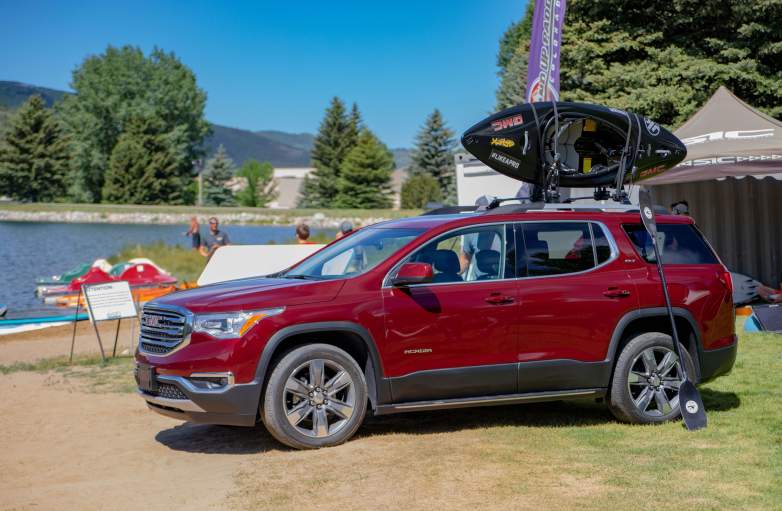
Original
Going back to the lack of articulated screen, for vlogging and other 1-person use, the 6D Mark II’s screen is tough to beat, but Canon has released an app that allows you see the live view on your phone. This means you can easily frame a shot for selfie purposes. For those of who us who won’t be standing on a boosted board while recording (and don’t need to monitor ourselves live), this should more than suffice.
The 5D Mark IV may be criticized. It’s not perfect, but in the end, it does its job extremely well with only a few minor compromises.
See more information and reviews about the 5D Mark IV here.
Nikon D850 – $3,296 (Stunning DSLR video, unreal stills)
It’s full frame, 45.7 megapixels, and the best ranked sensor (though DXOmark focuses on stills) of cameras under $8,000. The winner is here folks, and it’s the D850.
The biggest problem with Nikon video is autofocus. For vloggers and others who depend on reliable autofocus, this is a real “gotcha.” It’s the best stills camera on the market, but it’s simply not the best video camera for everyone. Looking at the footage below, it’s clear that Nikon has grown in leaps and bounds toward overtaking Canon, but they’re not there yet.
Video Sample:
Other limitations of this camera include poor autofocus (Nikon uses contrast detect and it’s considerably slower and less accurate). A perk, however, is that unlike the 5D Mark IV, the Nikon does not have enormous 4K video file sizes, which saves you a bit of a headache on that end. Personally, I think Nikon and Canon cameras have very similar ergonomics and menu qualities; I’m fine with either one.
Still:
Price: $3296 (Backlisted everywhere)
See more information and reviews about the Nikon D850 here
Best DSLR video camera for ~$2,000
D750 – $1,496 (Nikon’s option)
Boasting 24.3 megapixels, built-in Wi-Fi and 6.5 FPS at full resolution, this is a great camera for all purposes. Of course, it does suffer from the perennial Nikon problem, poor autofocus, but beyond this, it boasts some pretty nice footage and a superb sensor.
Video Sample:
Nikon’s are not as popular for video use for a few reasons, the aforementioned poor autofocus being the biggest one, but the footage from this camera is great and the stills are better than the 6D Mark II. If you can handle the trade-offs, it’s a great option.
Here’s a video of a more normal one-shot type of look.
See more information and reviews about the D750 here.
6D Mark II (Not actually recommended, but it beats the DSLR competition)
The 6DMkii was one of the most anticipated camera’s out there. Yet, its release has been a huge bomb. People don’t like the quality of the DSLR video. The 6D Mark II produces outdated video images. It just plain looks soft.
Canon’s own footage shows this:
Sure, it looks sharp at first glance, but hold on a second, what’s with the black borders reducing the size of the image? Yep, the 6DMkII can look pretty sharp, as long as you’re looking at a downsampled version of the pixels. That said, it’s not that the video is uniformly horrible; the video below looks a lot sharper, for instance:
Compared to its DSLR competition, however, I’ll take the 6D Mark II slightly over Nikon’s offering, the D750. If you can get out of the DSLR world and settle for a mirrorless, the answer in this price range is obvious, the a7 III is amazing and blows this camera out of the water, but it’s not a DSLR.
So why would anyone buy the 6D Mark II? Well it does have a nice fold-out screen that’s fully articulated (meaning it goes any which way). It also is a full frame camera and takes very decent stills (though nothing groundbreaking). That said, unless you have a lot of Canon glass and need a full frame camera with great autofocus, it simply doesn’t produce the best images out there for this large amount of money.
If you absolutely need a full frame DSLR with superb autofocus in this price range, then this is the camera for you. If you can budge on full frame, go with the 80D. It’s cheaper and has better video.
See more information and reviews about the 6D Mark II here
If you can go mirrorless: Sony A7 III – $1,998
If you’re not a purist, this mirrorless camera from Sony doesn’t break the bank and is a brutal hit to the entire market. BokehMarket.com said it, “Just made your camera gear less valuable.” For those willing to dive into mirrorless territory, what you lose is the precision and joy of seeing what you shoot. What do you gain?
Really nice 4K footage:
Plus, 10 FPS. Is it “just” as good as an a7r3? No it’s not. It is about 4% less good (strictly talking DXOmark sensor rating). Of course, if you need 42.4 megapixels, you’ll need an a7r, but if you can stomach less pixels, the a7 III is the one to beat. The biggest difference between this and the best camera Sony makes is resolution. For a full $1200 less, that’s a big difference.
What’s wrong with the A7 III? Personally, I do not like the ergonomics of Sony cameras. The menu systems are a nightmare. That said, camera brands are like a religion; the one you start with tends to make disproportionately more sense to you than it does objectively. If you are new to photography or don’t find Canon/Nikon products second nature, you can surely adjust and get a ton of bang for your buck.
Just don’t expect to look through the viewfinder; this is a mirrorless camera.
See more information and reviews about the A7 III here
Cameras for DSLR video under $1,000
Canon 80D – $999 (Best choice for overall value but no 4K)
While it may not shoot 4K, the 80D’s sharp and crisp 60FPS footage is undeniably great. Check it out below:
While you may not get the dynamic range or absolute sharpness of the 5D Mark IV, for vlogging, YouTube, and similar applications, the 80D is undeniably a bargain. Needless to say, it’s also solid for stills as well. The sensor has only about 20% less depth and dynamic range than the 5D. The real trade-off for stills and video is lowlight; the 80D will get noisy even at 1600 ISO. The 5D is considerably more clean.
Nonetheless, the 80D is a value choice because at 1/3 the price of a 5D, you’re getting almost 80% of the quality. Plus, the 80D has a fully articulating screen, making selfie mode fully viable for vloggers and other people who will be working with their camera in this capacity.
See more information and reviews about the 80D here
Sub $500
D3400 – $396.96
This is the rare Nikon win on our list. The thing is: Nikon is weak with video. If video is your priority, say 70-30, then you may go with Canon’s low-priced offering, the SL2, but if stills are even 40% important to you, the D3400 is an amazing choice and may be the single best bargain in still photography history. For $396.96, you can get this delightful camera with a very decent lens and know that it is better than the following way more expensive cameras for stills photography: D7500, 6D Mark II, A7S II, A6300, and the 5D Mark III.
The video may be a bit on the flimsy side, but it’s still usable. The stills are out of this world.
Video Sample:
Still:
See more information and reviews about the D3400 here
